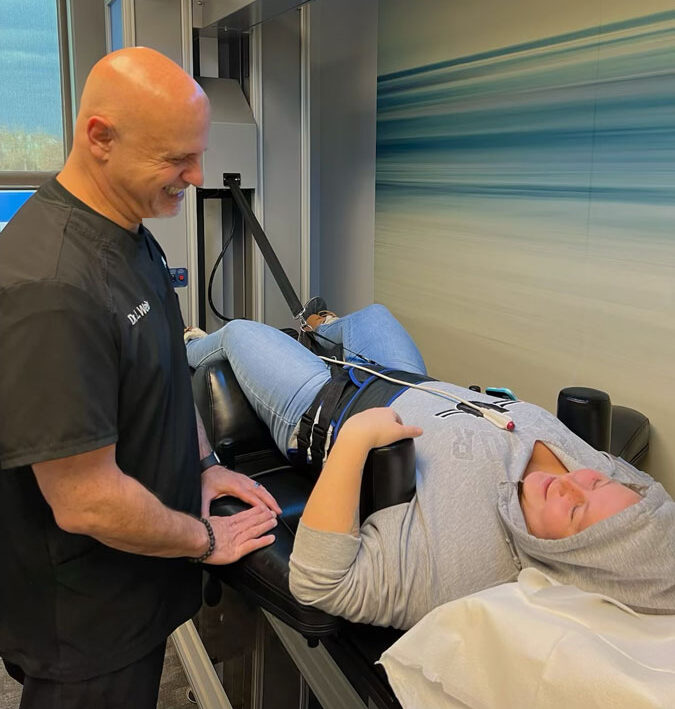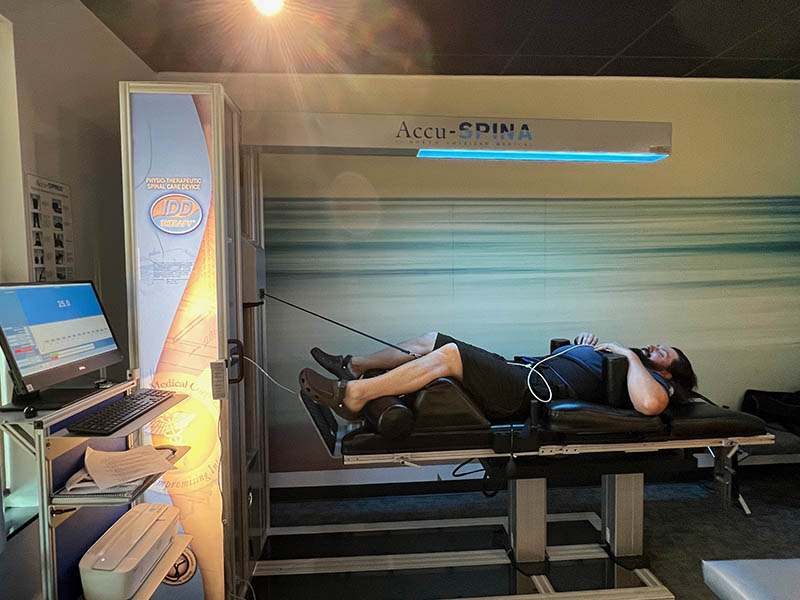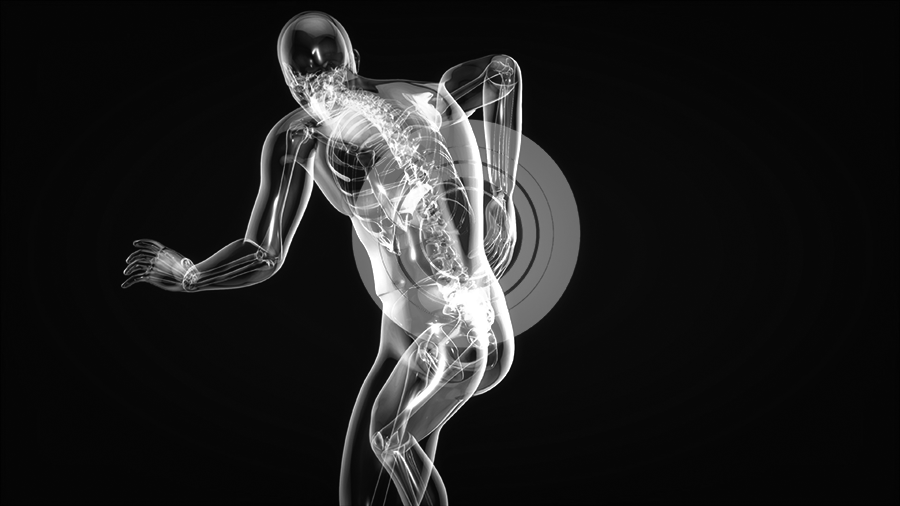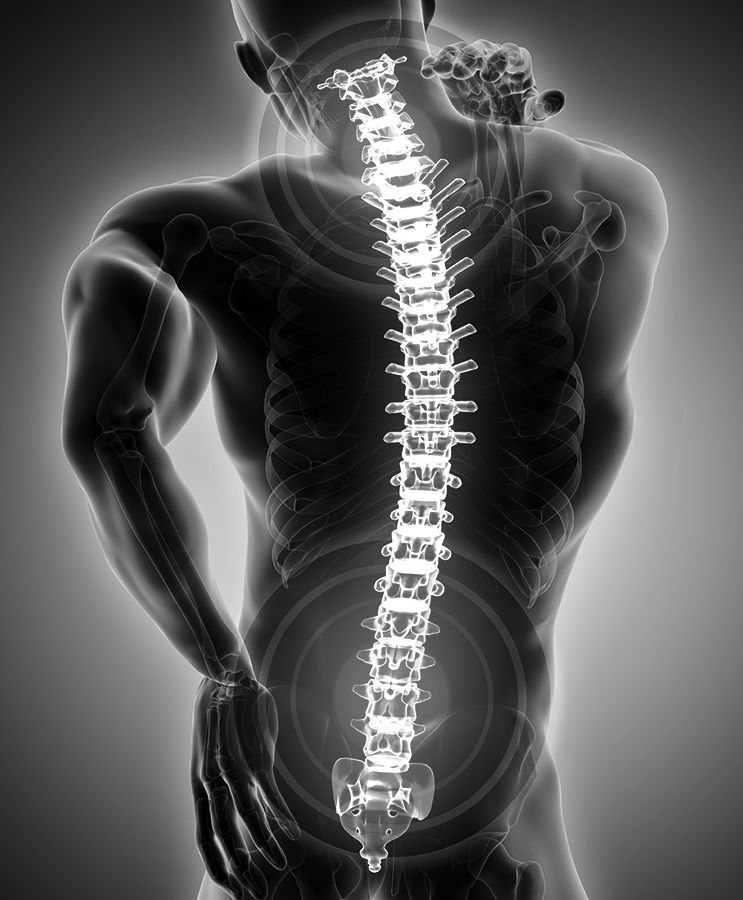Get Back Pain Relief Now!
WHAT IS SPINAL DECOMPRESSION?
Spinal decompression is a therapeutic technique designed to alleviate pressure on the spine, particularly targeting the intervertebral discs. Commonly used to address conditions like herniated discs, degenerative disc disease, and sciatica, which often cause pain and discomfort due to the compression of spinal nerves or structures, this treatment aims to create space between the vertebrae.
By gently stretching the spine, spinal decompression creates a negative pressure within the discs, potentially retracting herniated or bulging disc material and easing pressure on nerves and other spinal components. This process not only relieves immediate pressure but also promotes the influx of oxygen, water, and nutrients into the discs, supporting the healing of damaged tissues. As a result, many patients report reduced pain symptoms, enhanced mobility, and an overall improvement in their quality of life following spinal decompression therapy.
Spinal decompression therapy is typically used as part of a comprehensive treatment plan that may also include exercises, physical therapy, and lifestyle modifications. It is considered a non-invasive or non-surgical approach to treating certain spinal conditions.
SPINAL DECOMPRESSION THERAPY
Relieve Disc Pressure Now!
WHAT CONDITIONS CAN SPINAL DECOMPRESSION HELP WITH?
Spinal decompression therapy is known to help with the following conditions:
- Herniated Discs
- Bulging Discs
- Degenerative Disc Disease
- Sciatica
- Facet Syndrome
- Spinal Stenosis
- Posterior Facet Syndrome


Relieve Disc Pressure Now!
WHAT ARE THE EXPECTATIONS OF SPINAL DECOMPRESSION?
- Pain ReliefPain Relief
- Improved Mobility
- Reduced Need for Pain Medication
- Promotion of Healing
- Non-Invasive Approach
- Improved Quality of Life
- Long-Term Relief
SPINAL DECOMPRESSION CAN TREAT THE FOLLOWING CONDITIONS:
SPINAL DECOMPRESSION FAQS
How Does Spinal Nerve Compression Affect the Body?
The spinal cord runs through the spinal column, surrounded by bones, joints, and vertebral discs. This close proximity means that even minor shifts in spinal alignment can lead to contact with sensitive nerves.
A common issue is bulging or herniated discs, which can press against nerve roots leading to the limbs. This compression can result in pain, numbness, tingling, or muscle problems in an arm (cervical radiculopathy) or a leg (sciatica). Other spinal conditions, such as spinal stenosis, spondylolisthesis, ankylosing spondylitis, and complications from failed back surgery, can also compress spinal nerve tissue.
The spinal cord runs through the spinal column, surrounded by bones, joints, and vertebral discs. This close proximity means that even minor shifts in spinal alignment can lead to contact with sensitive nerves.
A common issue is bulging or herniated discs, which can press against nerve roots leading to the limbs. This compression can result in pain, numbness, tingling, or muscle problems in an arm (cervical radiculopathy) or a leg (sciatica). Other spinal conditions, such as spinal stenosis, spondylolisthesis, ankylosing spondylitis, and complications from failed back surgery, can also compress spinal nerve tissue.
At Disc Centers of America Novi/Plymouth, we use gentle techniques to relieve spinal nerve compression. One effective method is flexion-distraction therapy. In this procedure, you lie on a segmented table, and the chiropractor adjusts the table segments, allowing gravity to help realign structures such as herniated discs back into place.
Another approach is computerized spinal decompression therapy. This involves lying on a motorized table while harnessed, with precise degrees of flexion-distraction force applied to create negative pressure between vertebrae, pulling discs away from nerves.
Not all spinal issues are suitable for both treatments. For example, flexion-distraction therapy might be recommended for spondylolisthesis or spinal stenosis, while more severe conditions might require surgery.
Surgical spinal decompression involves removing damaged discs and installing synthetic spacers or metal hardware to stabilize the spine. This major surgery can limit spinal mobility and requires a lengthy recovery period.
Doctors often recommend exploring conservative treatments before considering surgery. Non-surgical spinal decompression therapy is an effective alternative for many cases, achieving similar results without the need for invasive procedures or long recovery times.
Spinal decompression therapy sessions are designed to be easy and comfortable. A typical session lasts up to 45 minutes, with multiple sessions scheduled over five to seven weeks.
During your treatment period, you may also receive other supportive non-surgical treatments, such as ultrasound, electric stimulation, ice therapy, or heat therapy.
Dedicated to Your Well-Being
DISC CENTERS OF AMERICA NOVI/PLYMOUTH
Disc Centers of America Novi/Plymouth are committed to enriching lives through a combination of expertise, compassion, and individualized care. For years, we’ve been at the forefront of spinal health and wellness, helping our community to flourish by offering an avenue to optimal health.


